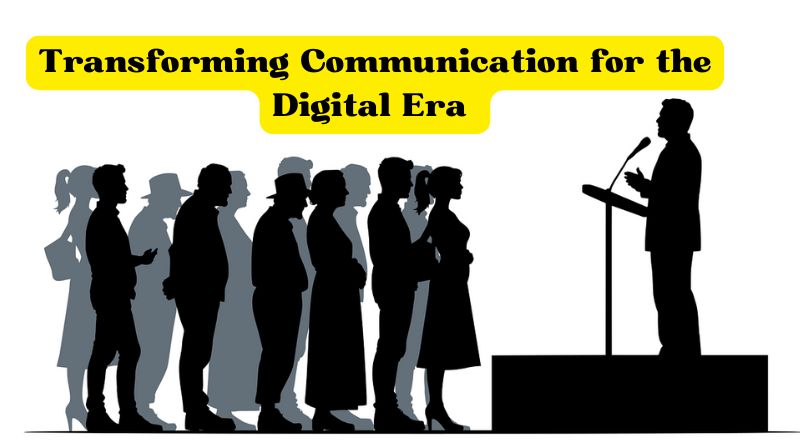In every opportunity for leadership, there will be obstacles and tough times – not just successes. It is how someone responds to these tough times, that can be the sign of a great leader. As with many things in life, timing is also critical. Learning how to communicate effectively to your chosen audience at the right time and the right place can be difficult, but can reap great benefits. (Transforming Communication for the Digital Era)
The most important aspect of any effective communication is knowing your audience. This audience will vary, so being flexible in your communication styles is a great skill for any leader to have. Good communication skills are crucial in a leader if they are to remain a leader. A leader is someone who plays a prominent role in a business or a department within it. How you speak to them, and what you choose to say or not say to them, is key to successful communication.
Choose the Right Time to Speak :

Timing is a key. For example, no business leader looks forward to giving out bad news, but sometimes the more you avoid it, the worse things can become.You need to communicate layoffs sooner rather than later if there is a downturn. Effective verbal communication does not come naturally to everyone. You can learn this skill with a bit of time and effort.
Once everyone is at the meeting, how should you announce the news? Do you just blurt out that there will be layoffs and leave it at that? Or will you explain the reasons behind the decision, what the next steps will be, and what you think will happen going forward? Listening is just as important a leadership skill as speaking. Will you give staff a chance to ask about the redundancies and the situation as a whole? Or leave it to your managers? Once the meeting is over, you will then have a number of follow-up steps and options. Will you speak to each person getting the pink slip, or let your hiring manager do it? Will these workers be given notice, with no one expressing regret or appreciation for their past efforts?
Sometimes communication, for good or ill, comes from not saying anything at all. A worker who is given clear reasons and thanked is less likely to feel dissatisfied. (Transforming Communication for the Digital Era)
What You Say and Don’t Say Does Count :

On the other hand, going into too much detail might open up an entire legal minefield if the worker believes the lay-off is because you “don’t like them” or some form of discrimination is going on. Managers and staff must ensure that all workers are treated respectfully. Employers should discourage off-color jokes, bullying, and aggressive tendencies in all forms, including email, social media accounts, and face-to-face interactions between colleagues. Even “harmless teasing” can be hurtful and seem bullying to some individuals.
The most important aspect of leadership can often be to set the tone. A positive, upbeat leader with a can-do attitude is more likely to gain followers than someone who delivers consistently negative messages. Even when things are bad, a leader with good communication skills will be able to reframe the issues in such a way as to maintain a loyal following. The company will make clear that these short-term losses are being made in favor of long-term gains in terms of the lay-offs. (Transforming Communication for the Digital Era)
Conveying Change in Workplace Conversations :

Many people hate change. Even though it is an inescapable fact of life, people get so comfortable in their routines that any change can be very upsetting and even seem like a serious threat to all life as they know it. In most cases, this will not be true, but having empathy for this point of view can help smooth out the transitions. Have clear reasons to meet, agendas, and action steps at the end of each meeting. Follow up in a timely manner on any of the action steps that result from these meetings.
Always be clear in your verbal and written communications. Confirm anything important in writing, including email, such as after a phone conversation or team meeting. Check and double-check, especially when any deadlines are approaching. It is better to summarize important points and dates briefly in your communications and repeat yourself, for example, than assume that everyone knows it all already when they might not. These are some of the most important aspects of effective communication if you are a business leader. Your approach will differ somewhat depending on whether the communication is verbal or written. (Transforming Communication for the Digital Era)
Also Read : How to Use the Law of Attraction for Money Manifestation
Be a Good Listener :

Many people believe that being a good leader is all about speaking powerfully. The truth is that a good leader listens as well. They show empathy, value opinions and are constantly learning from others rather than thinking they have all the answers. Everyone makes mistakes. If a mistake is made, investigate the reason for it. Listen and share viewpoints. Seek ideas and innovations. Give people another chance if you think they deserve it. Treat colleagues the way your best boss treated you. We can never walk in another person’s shoes, but we can try to be more understanding if they are having professional or personal problems, so that everyone feels valued.
Words and Body Language Matter Beyond the Clear Exchange of Information :

Speaking in person and over the phone clearly and concisely is an important skill for any leader to develop. A good leader understands the difference between the two and other factors that contribute to words other than style and phrases. Delivery style and tone influence what is said and how it is received by the audience. Communicating in person can be one of the most efficient ways to convey ideas and open up the floor for discussion. It may not, however, be the most efficient way to give detailed information. Knowing the difference between the two can often mean the difference between success and failure when it comes to planning new projects and initiatives.
Your body language will say a lot about who you are as a person and what your communication style is. Careless body language can also undermine the message that you were trying to convey. If your body language does not match your spoken words, there can be a serious disconnect which can be confusing or suggest to people that you are not telling the truth or are in some sort of mood.
